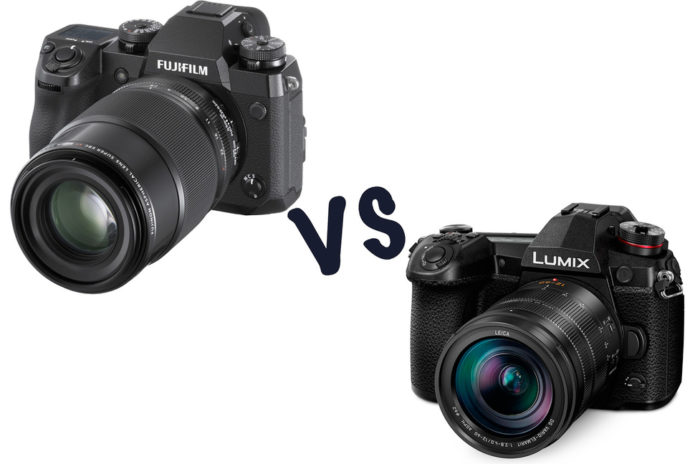It’s battle of the mirrorless big guns, with the new Fujifilm X-H1 posing some considerable questions for Panasonic’s formidable Lumix G9. If you’re looking for a pro-spec interchangeable lens camera, minus the DSLR bulk, which makes best sense for you?
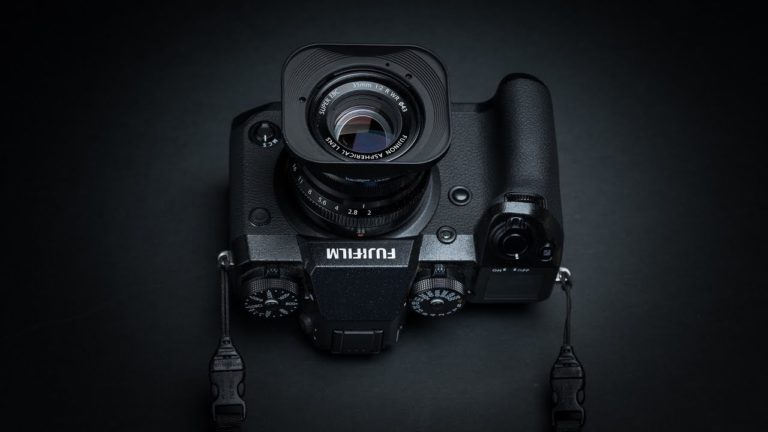
Fuji X-H1 vs Panasonic G9: Design
- Both cameras: Splash, dust and freeze resistant build
- Both cameras: Top-line LCD status screen, separate function lever
- Both cameras: Dual UHS-II compatible SD card slots
- X-H1: Magnesium alloy body with (8H) scratch-resistance; G9: Metal body with faux leather coating
- X-H1: 139.8 x 97.3 x 85.5mm, 673g; G9: 136.9 x 97.3 x 91.6mm, 658g
At this top-end spec, robustness is important. Both Fuji and Pana go in with splash, freeze and dust-resistant build quality, but the X-H1 brings an extra-thick magnesium body and a scratch-resistance of the degree you’d usually find on a smartphone’s front glass.
Visually, it’s going to be a matter of taste. We always feel that Fujifilm brings the heart, while Panasonic acts more logically, like the brain of the equation. Emotively, therefore, we think the old-skool “blocky” finish of the X-H1 is the better looking of the two.
Both cameras feature an LCD top plate – the only two makers outside of Leica to do so – a dual SD card slot and an arrangement of manual controls for ease of use. The Panasonic does feature a dual function meter, however, which doubles-up quick-access controls at the flick of a switch.
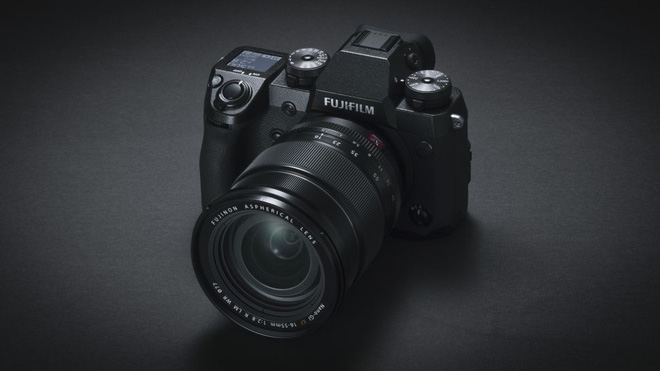
Fuji X-H1 vs Panasonic G9: Viewfinder & Screen
- X-H1: 3,680k-dot 100fps 0.75x magnification OLED EVF; G9: 3,680k-dot 120fps 0.83x magnification OLED
- X-H1: 3-inch, 1,040k-dot tri-variable LCD touchscreen; G9: 3-inch, 1,040k-dot vari-angle LCD
As both cameras are pitched as genuine DSLR competition, both feature a full array of viewfinder and LCD screen. The G9’s huge-scale finder is the biggest we’ve seen, at 0.83x magnification, but the X-H1 isn’t far behind, at 0.75x. The resolution of these OLED panels is one and the same, but the G9 has the upper hand with a 120fps maximum refresh rate, compared to the X-H1’s 100fps max.
On the rear both cameras include a 3-inch, 1.04m-dot LCD screen. But here’s where the Fuji has a special trick: its screen can be adjusted on two axes, meaning variable adjustment whether in portrait or landscape orientation. The Panasonic has a vari-angle screen, but on the one axis, although this screen can at least be pulled to the side of the camera for adjustment, unlike the Fuji’s arrangement.
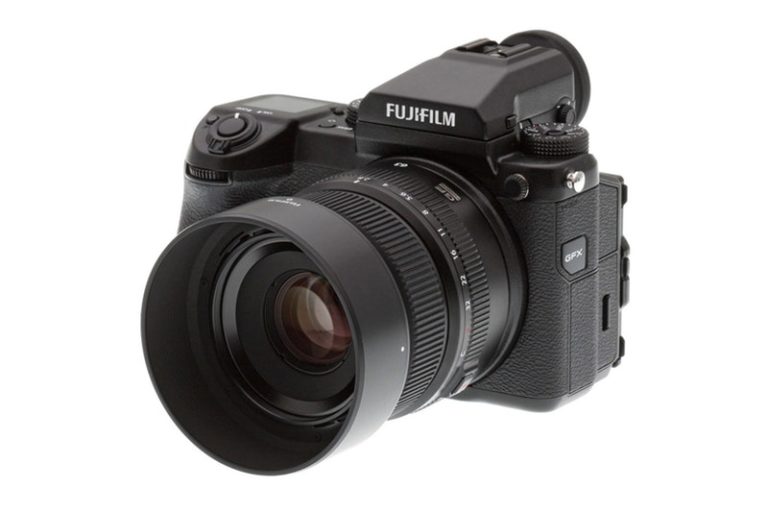
Fuji X-H1 vs Panasonic G9: Speed
- X-H1: In-body image stabilisation (IBIS), claims to 5.5-stops max; G9: Dual IS 2, claims to 6.5-stops max
- X-H1: 325 area hybrid autofocus system; G9: 225 area contrast-detect autofocus system
- Without optional grip (mechanical shutter): X-H1 to 8fps (continuous); G9 to 9fps (continuous), 12fps (single)
- Without optional grip (electronic shutter): X-H1 to 14fps (continuous); G9 to 20fps (continuous), 60fps (single)
- With optional grip (mechanical shutter): X-H1 to 11fps (continuous); G9 same as without grip (9fps (continuous) / 12fps (single))
In terms of raw speed it’s the Panasonic that, on paper, has the upper hand. Without the need for any additional accessories it can shoot 9fps in continuous autofocus (to the X-H1’s 8fps), while its electronic burst mode hits an eye-watering 20fps (to the X-H1’s 14fps).
Adding the optional grip to the Fujifilm does up its speed to 14fps, which sees the camera outpace the Panasonic in mechanical shutter terms. The Fuji’s optional grip (VPB-XH1) also adds two additional batteries compared to the one in Panasonic’s optional grip (DMW-BGG9), which gives yet another reason to consider its purchase.
Autofocus in the X-H1 is a tweaked version of the Hybrid system found in the company’s X-T2, with 325 areas. Panasonic claims the G9 offers the “world’s fastest” in a mirrorless system, with its 225 area system. That said, the X-H1 does have phase-detection autofocus pixels on its sensor, which the G9 does not.
The X-H1 is the first Fujfilm mirrorless to introduce in-camera image stabilisation, with a 5-axis system that can offer up to 5.5-stops (typically it’s 5-stops for most lenses, some longer lenses don’t have the image circle to offer such response, of course). The Panasonic claims up to 6.5-stops (this is quoted at the widest-angle on its 14-140mm lens only, however, so isn’t always achievable depending on lens choice).
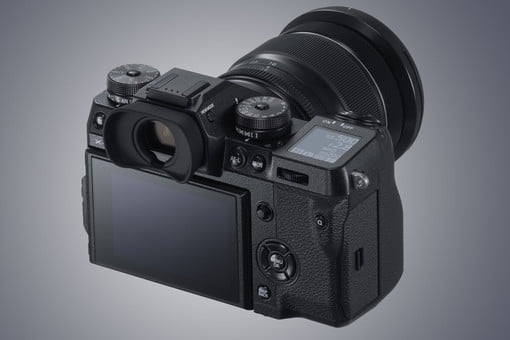
Fuji X-H1 vs Panasonic G9: Image Quality & Video
- X-H1: 24.3MP APS-C size X-Trans CMOS III sensor; G9: 20MP Micro Four Thirds size Live MOS sensor
- G9: High-Res Mode to 80MP (secured camera only, no subject movement), 4K and 6K Photo modes
- X-H1: 4K at 30/24fps; G9: 4K at 60/50/30/25/24fps; Both cameras: DCI 4K (4096×2160) Cine 4K available
If you’re spending upwards of £1500 of a camera body then you’re going to expect top image quality. There’s a lot to consider in this department, of course, with the sensor size and technology on offer from these two brands differing to quite a notable degree.
First up, size. The X-H1 has the physically larger APS-C sensor size, compared to the smaller Micro Four Thirds sensor found in the G9.
Second, resolution. The Fujifilm has more pixels (24.3 million) on its sensor surface, but as there are fewer in the G9 (at 20 million) the Panasonic offers roughly the same size of pixels, which should help keep the output quality between the two cameras ultimately similar.
Third, technology. While the G9 uses a usual Bayer filter to determine its images’ colour output, the X-H1 draws upon Fujifilm’s proprietary X-Trans CMOS III, which utilises a wider colour array pattern for greater colour accuracy. If experience is anything to go by then we’ve typically found it is Fujifilm that wins in this area.
For video capture, both cameras offer 4K capture, but the Panasonic at 60fps maximum compared to the Fujifilm’s 30fps maximum. The X-H1 does throw its Eterna Film Simulation mode – said to be ideal for accurate colour reproduction – into the mix, but the G9 has the more professional post-production reach with its format and frame-rate scope.
Both cameras feature a 3.5mm microphone jack, the X-H1 with high-res recording up to 24-bit/48kHz. The Panasonic features a 3.5mm headphone jack, which the Fujifilm only offers on the optional batterygrip – which seems like a strange decision to us.
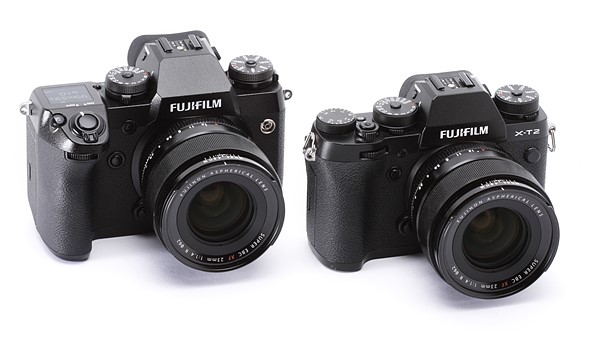
Fuji X-H1 vs Panasonic G9: Conclusions
- Fujifilm X-H1: £1699 body-only; Panasonic Lumix G9: £1499 body-only
Talk about a close-run race. In terms of pure spec, it’s the Panasonic which throws down the speed and video spec to beat, along with a wider array of available lenses. The Fujifilm has its own apparent perks, such as build quality, overall aesthetics, that tri-adjustable LCD screen, plus its higher-resolution and larger sensor of the two cameras. Add the optional battery grip and the X-H1 makes an even stronger case, which might be enough to tilt the balance.
(pocket-lint.com, https://goo.gl/dDpoJ9)


